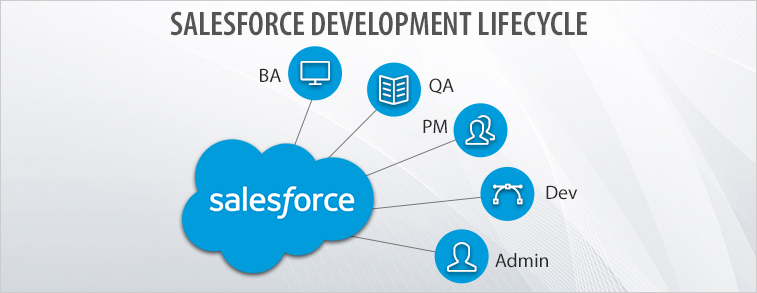All you need to know about Salesforce Development Lifecycle

The complexity of software development practices and tools is increasing day by day and therefore, the entire process may become incomprehensible sometimes. There arrives the need of SDLC. Software development is a complex task that needs to be implemented within a defined lifecycle to make sure all the requirements are met and the end product is well tested. Same is the case with Salesforce.
A Salesforce Application Development lifecycle is no different from the software development lifecycle and involves Release manager, Product manager, Software developer, Quality engineer, Administrator, and Trainer.
Here is all you need to know about Salesforce Development Lifecycle:
- Create a Source Control Repository:
Keeping in mind that most projects are being developed on open source platforms, a source control repository becomes a must generally it is a Git repository. Even if the project is not open source, a dedicated source code repository must be created and should be controlled by a single owner. The code must be staged to it after proper testing only. - Development Phase:
The sandboxes are used for the Salesforce Application Development. These are dedicated environments that do not impact the Salesforce production. Each developer forms a team where they used a sandbox to develop the new code irrespective of what is running in production. The Force.com Integration Development Environment is used to connect with the sandboxes. The Metadata is extracted from sandbox to the IDE only after unit testing is performed. If multiple developers are using the same sandbox, it is important to check that one’s code does not get replaced by others while committing. - Testing:
Testing is an indispensable part of the entire lifecycle that a Salesforce Development Company follows. The testers also create their own Sandboxes and move the code that needs to be tested in each dedicated sandbox. The QA tester might not be required to test the entire project or functionality and in that case, he would only migrate a part of the code that needs to be tested. QA testers can share their Sandboxes for extensive testing. This is integration testing that involves the developer and tester relationship but before the new code is moved to production, it has to run through multiple stages of Acceptance testing that involves the product owner. -
Acceptance Testing:
This is the testing level where the product managers get involved and provide sign off on the functionality of the software as per the business requirement. This is the last level of testing and after this, the code is directly staged for production.It is the task of release managers to create a test set up at this stage that offers Salesforce Application testers a sandbox to run their own test beds. If any functionality is found not been addressed until now or not working as per the requirement, the code will be sent back to the developer and will go through the entire lifecycle again. Once the entire project receives a signoff from the Product managers, the code is released to production staging.
- Performance testing:
A final phase of the code is the performance testing where again sandboxes are created that are quite similar to the production environment and have the actual production cases. -
Patch releases:
At times, due to stringent deadlines, only major functionalities are moved to Salesforce of production and the further functionalities are released in patches after following the entire process.Whenever you hire a Salesforce Development Company, make sure that they are deploying the Salesforce Development Lifecycle properly. Otherwise, your money, time, effort and dreams may go in vain.
